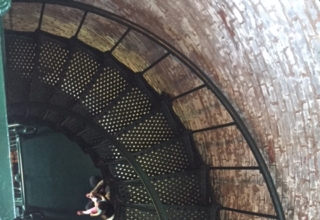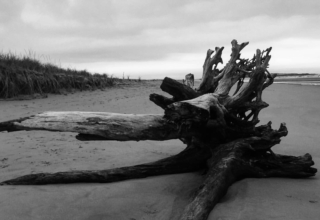
How Does Commitment in Relativism Feel?
While Perry was primarily concerned with the cognitive aspects of development among the young Harvard undergrads he was studying, he certainly ventured into the domain of emotions and affect when writing about the grieving process that attends any movement to a more mature and nuanced state of development. I would suggest that the role played by affect and emotions is particularly important (and often elusive) when one is engaged from a relativistic perspective in making a commitment and taking action in the world.
There is inevitably a mixture of emotions when we enter into a domain of commitment in relativity. I suspect that it is a bit like Adam and Eve leaving Eden with full knowledge of one another and the world. As Perry insightfully noted, we will grieve the loss of some innocence that comes with any movement to a higher cognitive level. We leave the sanctuary of relativism (without action) with inevitable regret and fear, just as we leave the simplicity of Dualism (and Multiplicity) with a heavy heart. There is also the elation associated with new birth—for we find new horizons that afford us new competencies and new opportunities. If we have a companion (as Adam and Eve) did, then the move might not always be so frightening. Other forms of support also make a big difference (Bergquist,2011).
We certainly see this interplay of head and heart taking place in Gergen’s description of “being over our head” and Kegan’s reflections on higher states of reasoning. An even more detailed and neuro-biologically based assessment is offered in Antonio Damasio’s new book, Feeling and Knowing: Making Minds Conscious. Basically, in seeking to gain some understanding and traction with the elusive phenomenon called “consciousness”, Damasio is providing us with useful insights regarding what Perry has called “commitment in relativism.”
Being, Feeling and Knowing
First, Damasio (2021, p. 25) introduces us to three fundamental evolutionary stages: (1) a sense of being, (2) the experience of feelings, and (3) engagement in the process of knowing. While recognizing that we are alive (being) is critical, it is also important that we frequently access our relative success in being alive—this is where feelings enter the picture. Images are created that bring together feelings and knowing. These images are neuro-biologically-based spatially mapped patterns that represent objects and actions. (Damasio, 2021, pp. 35-36) We operate in the world through “the construction and storing of imagetic patterns by the organism and inside the organism.” (Damasio, 2021, p. 38) Damasio’s next step concerns relating and combining images in our mind and transforming them within our creative imaginations. New images are produced: “that signify ideas, concrete as well as abstract; we produce symbols; and we commit to memory a good part of all the imagetic produce. As we do so, we enlarge the archive from which we will draw plenty of future mental contents.” (Damasio, 2021, p. 47)
This very condensed summary of the way in which Damasio proposes that we operate in the world sets the stage for Damasio’s venture into the realm of consciousness. Before entering this realm, I wish to extract several important insights from this initial summary description. First, Damasio is describing a constructive process that requires extensive reworking and re-assembling of sensory information coming in from outside ourselves. I realize that Damasio would like us to focus on the cave that resides within ourselves, as we seeking to establish our own identity (being) and a way of making sense of and acting in our world (feelings and knowing). However, I imagine that he would tip his hat to Plato and recognize the many ways in which the cave that exists outside ourselves influences our internal cave–the shadows (images) and interpretations (imagetic patterns and combinations) that we create internally.
Download Article















